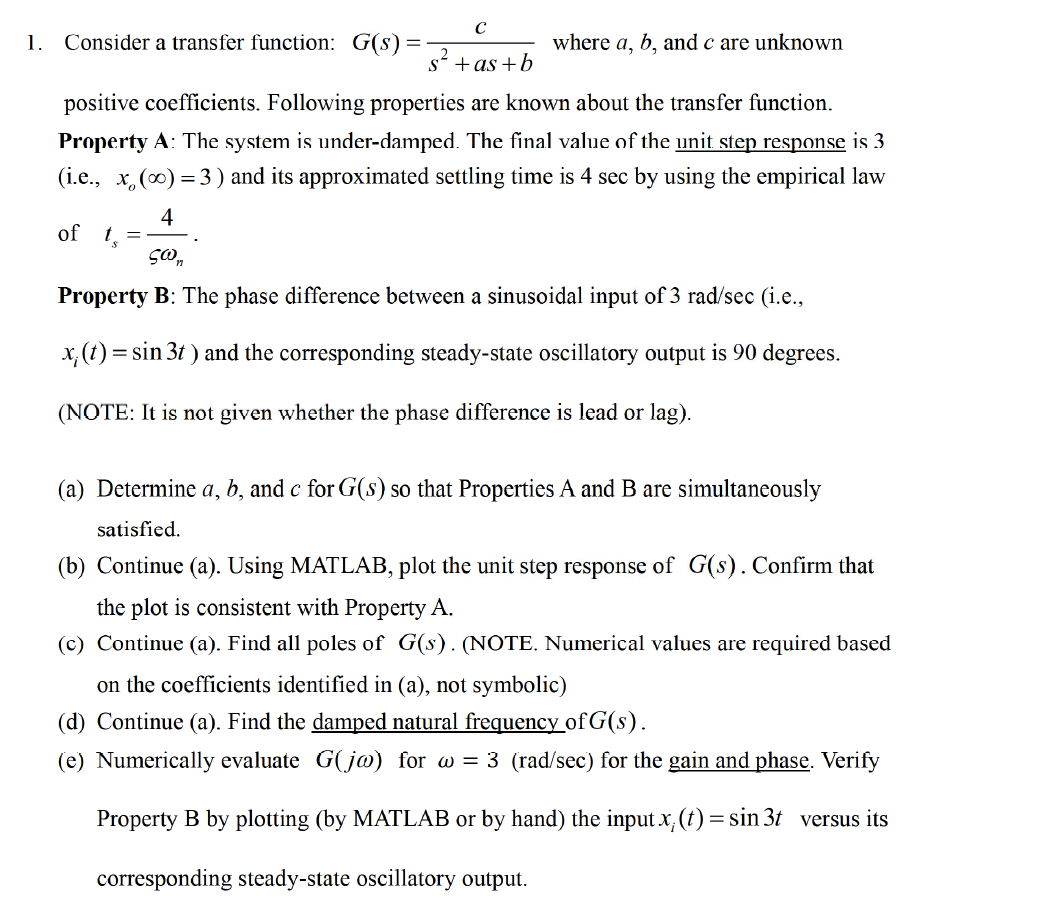Answered step by step
Verified Expert Solution
Question
1 Approved Answer
C 1. Consider a transfer function: G(s) = where a, b, and c are unknown s +as+b positive coefficients. Following properties are known about

C 1. Consider a transfer function: G(s) = where a, b, and c are unknown s +as+b positive coefficients. Following properties are known about the transfer function. Property A: The system is under-damped. The final value of the unit step response is 3 (i.e., x(0) = 3) and its approximated settling time is 4 sec by using the empirical law of t = 4 Son Property B: The phase difference between a sinusoidal input of 3 rad/sec (i.e., = sin 3t) and the corresponding steady-state oscillatory output is 90 degrees. x; (t)= (NOTE: It is not given whether the phase difference is lead or lag). (a) Determine a, b, and c for G(s) so that Properties A and B are simultaneously satisfied. (b) Continue (a). Using MATLAB, plot the unit step response of G(s). Confirm that the plot is consistent with Property A. (c) Continue (a). Find all poles of G(s). (NOTE. Numerical values are required based on the coefficients identified in (a), not symbolic) (d) Continue (a). Find the damped natural frequency of G(s). (e) Numerically evaluate G(j) for w = 3 (rad/sec) for the gain and phase. Verify Property B by plotting (by MATLAB or by hand) the input x, (t) = sin 3t versus its corresponding steady-state oscillatory output.
Step by Step Solution
There are 3 Steps involved in it
Step: 1

Get Instant Access to Expert-Tailored Solutions
See step-by-step solutions with expert insights and AI powered tools for academic success
Step: 2

Step: 3

Ace Your Homework with AI
Get the answers you need in no time with our AI-driven, step-by-step assistance
Get Started


